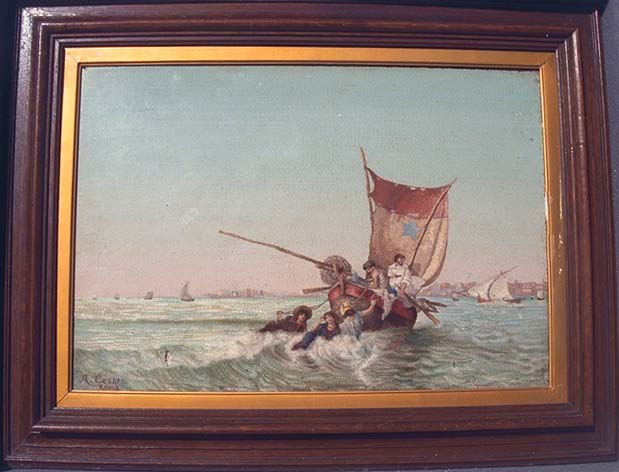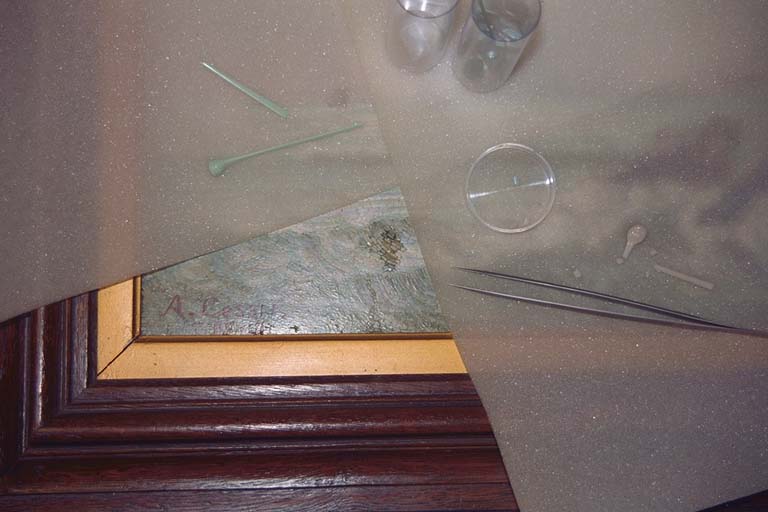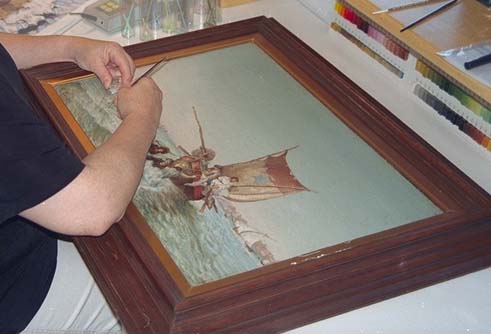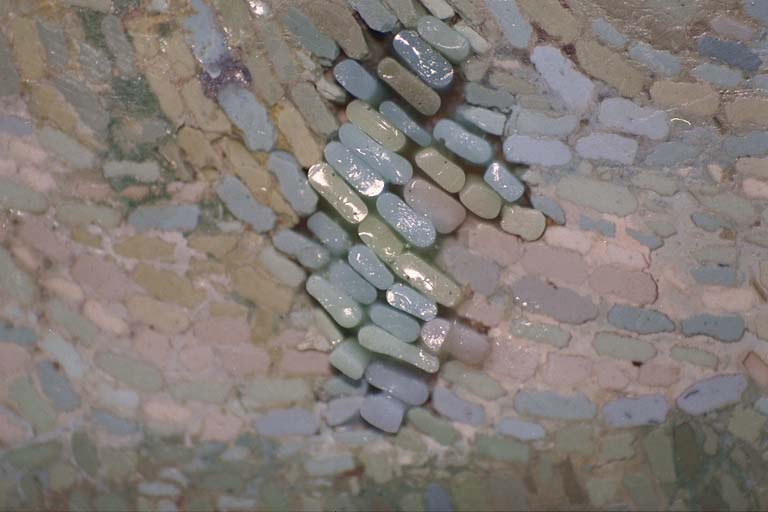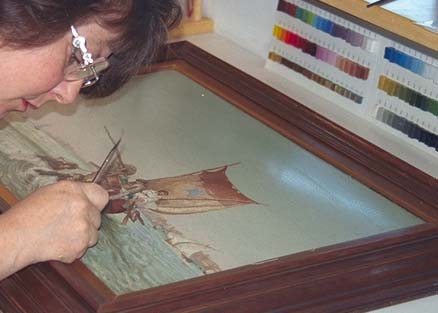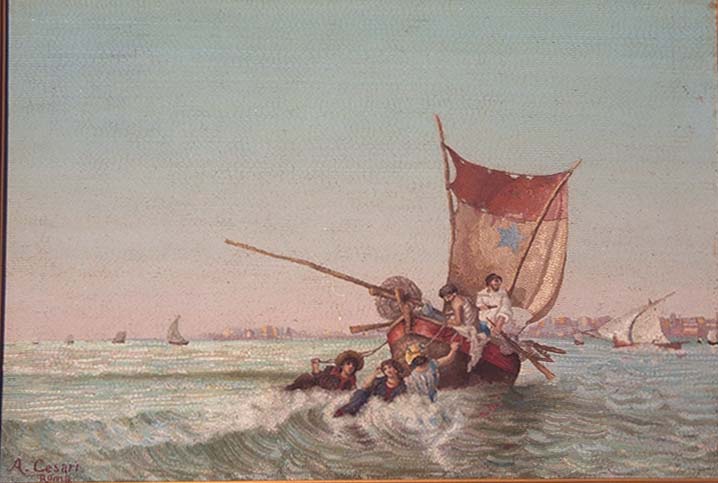|
The restoration work I have done for The Gilbert
Collection has been one of the most exciting things that has taken place in my studio.
Through the work, I have the privilege of forming a special bond with the artist, the
mosaicist. Understanding the artist's choice of color and expression in micromosaic is an
essential part of being able to repair the damage done to their masterpiece. However, the
most important aspect of the work is to leave no trace of my relationship with it. The
color, shape, size and placement of the smalti must be as though done by the master
himself.
|
|
Restoration for the Gilbert Collection, July 1999.
|
|
In glass, color is chemistry, and the most time consuming aspect of the work is the color matching.
|
|
Smalti that have been chipped or broken and fall short of the surface of the micromosaic must first be removed.
|
|
When the new smalti are set firmly in place the next layer of grout can be replaced and the surface level of the smalti is made to match.
|
|
Then a different kind of color matching takes place, that of matching the surface layer of the grout. It is equally as important as matching the glass colors. Within one square inch of a micromosaic, there may be many different shades of grout.
|
|
When the layer of colored grout has been replaced the surface is polished and restored to its original luster.
|
|
|
|
|
